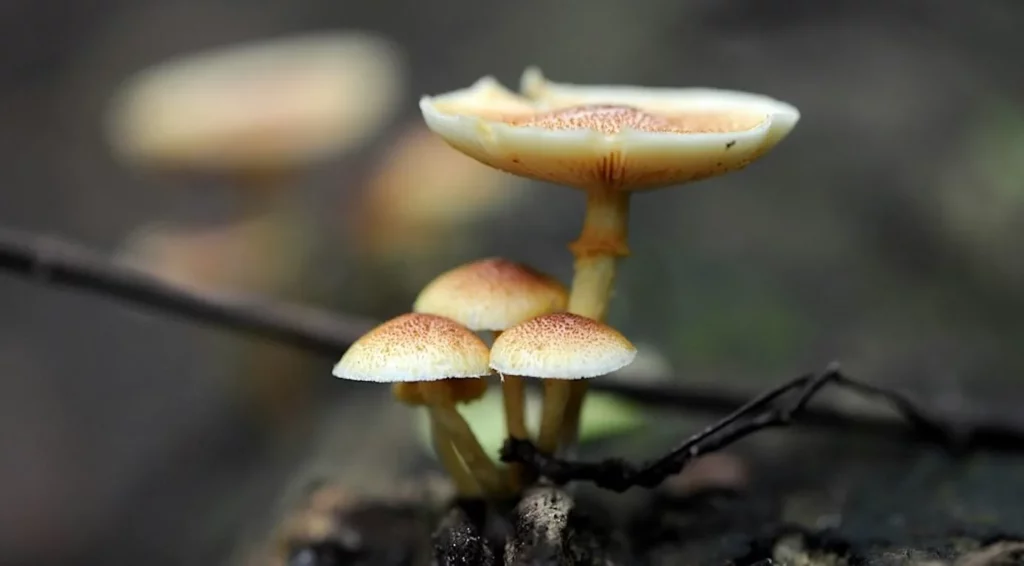Cannabis
Best Mushroom Strain for Visuals
When people think about psychedelic experiences, they often envision vivid colors, intricate patterns, and otherworldly visuals. This article focuses on the best mushroom strain for visuals, helping you understand the factors that contribute to these effects and offering a glimpse into the world of psilocybin mushrooms.
Introduction to Psilocybin Mushrooms
Psilocybin mushrooms, also known as magic mushrooms or shrooms, are fungi that contain the psychoactive compounds psilocybin and psilocin. When ingested, these compounds cause hallucinogenic effects, such as altered perceptions, emotions, and thought patterns. The visual effects are often considered one of the most remarkable aspects of a psychedelic experience.
Factors Affecting Visual Effects
Before diving into the best mushroom strains for visuals, it’s crucial to understand that a few factors can influence the intensity and quality of visual effects.
Dosage
The amount of psilocybin ingested plays a significant role in determining the strength of visual effects. Higher doses typically produce more intense visuals, while lower doses may produce subtler results.
Set and Setting of Best Mushroom Strain for Visuals
Your mindset and the environment in which you consume the mushrooms can also impact the visuals. A calm, comfortable, and familiar setting is more likely to produce enjoyable visual effects.
Individual Physiology
Lastly, individual differences in physiology, such as metabolism and brain chemistry, can influence how psilocybin affects a person, including the intensity of visuals.
Top 5 Best Mushroom Strain for Visuals
With those factors in mind, let’s explore the top 5 mushroom strains known for their visual effects.
Psilocybe cubensis ‘Golden Teacher.’
The Golden Teacher strain of Psilocybe cubensis is famous for its balanced effects, including vivid visuals, profound insights, and a sense of connection to nature. The visuals tend to be more colorful and geometric.
Psilocybe azurescens
Psilocybe azurescens is one of the most potent psilocybin mushrooms, known for its strong visual effects. Users often report experiencing intense fractals, color shifting, and complex patterns.
Psilocybe semilanceata (Liberty Cap)
The Liberty Cap is a classic mushroom strain revered for its potent visual effects. Alongside intricate patterns, users often report the perception of objects appearing to “breathe” or warp.
Psilocybe cyanescens (Wavy Cap)
Psilocybe cyanescens, commonly known as the Wavy Cap, is another potent mushroom strain. Users report experiencing vivid colors, morphing patterns, and the sensation of objects melting or blending into each other.
Panaeolus cyanescens (Blue Meanies)
Blue Meanies, or Panaeolus cyanescens, are potent strains that induce intense visual experiences, such as kaleidoscopic patterns, color shifts, and vivid hallucinations.
Comparing the Visual Effects
While each of these strains is known for its visual effects, the exact nature of the visuals can vary between individuals and experiences. Some may find Golden Teachers to provide the most balanced visuals, while others might prefer the intensity of Psilocybe azurescens or the unique effects of Blue Meanies. Ultimately, personal preference and individual factors will determine which strain is the best fit for you.
Cultivating The Best Mushroom Strain for Visuals

Growing your psilocybin mushrooms can be an exciting and rewarding experience. By cultivating your mushrooms, you gain control over the strain, potency, and overall harvest quality. This section will provide a step-by-step guide to growing mushrooms at home, but remember to check the legal status of psilocybin mushrooms in your area before proceeding.
Step 1: Choose Your Mushroom Strain
The first step in cultivating your mushrooms is to choose a strain that aligns with your desired effects, such as visuals. As previously mentioned, popular songs for visuals include Golden Teacher, Psilocybe azurescens, Liberty Cap, Wavy Cap, and Blue Meanies. Once you’ve chosen a strain, you must obtain spores or a spore syringe from a reputable supplier.
Step 2: Prepare Your Substrate
The substrate is the material on which your mushrooms will grow. A popular substrate for psilocybin mushrooms is a mixture of vermiculite, brown rice flour, and water. To prepare the substrate:
Mix 2 cups of vermiculite with 1 cup of brown rice flour in a large bowl.
Slowly add 1 cup of water, mixing until the substrate reaches a consistency that holds its shape when squeezed but does not drip water.
Step 3: Sterilize and Inoculate Your Substrate
To prevent contamination, you’ll need to sterilize your substrate before introducing the mushroom spores. Follow these steps:
Fill small, wide-mouth glass jars with the prepared substrate, leaving about an inch of space at the top.
Cover the jars with double aluminum foil and place them in a pressure cooker or large pot with a tight-fitting lid.
Sterilize the jars by cooking them at 15 psi for 60-90 minutes. Allow the jars to cool completely before proceeding.
In a sterile environment, such as a glovebox or laminar flow hood, use a spore syringe to inject a small amount of spore solution into each jar through the foil.
Step 4: Incubate and Monitor Your Jars
During the incubation period, the spores will germinate and colonize the substrate. To ensure optimal growth, follow these guidelines:
Store the inoculated jars in a dark, warm place with a temperature of 75-80°F (24-27°C).
Monitor the jars for signs of colonization, which should appear as white, fluffy mycelium. If you notice any other colors, such as green or black, this may indicate contamination.
Allow the mycelium to fully colonize the substrate, which can take 2-4 weeks.
Step 5: Prepare Your Fruiting Chamber
Once the jars are fully colonized, it’s time to prepare a fruiting chamber where the mushrooms will grow. A simple fruiting chamber can be made from a clear plastic container with a lid. Follow these steps:
Drill holes in the container’s sides and lid for adequate air exchange.
Place a layer of moist perlite on the bottom of the container to maintain humidity.
Remove the fully colonized substrate cakes from the jars and place them on a small square of aluminum foil inside the fruiting chamber.
Step 6: Initiate Fruiting and Harvest Your Mushrooms
To encourage fruiting, you’ll need to provide the proper environmental conditions:
Maintain a temperature of 70-75°F (21-24°C) and a humidity of 95-100%.
Provide indirect light 12 hours a day using a small LED or fluorescent light.
Fan the fruiting chamber several times a day to promote air exchange.
Within a week or two, you should begin to see small mushroom “pins” forming on the surface of the substrate cakes. These pins will grow into mature mushrooms over several days.
Step 7: Harvest Your Mushroom strains
When the caps of the mushrooms begin to open and the veil beneath the lid starts to tear, it’s time to harvest:
Gently twist and pull each mushroom away from the substrate cake, careful not to damage the mycelium.
Place the harvested mushrooms on a paper towel or wire rack to dry. You can use a fan or a food dehydrator to speed up the drying process.
Once the mushrooms are dehydrated, store them in an airtight container in a cool, dark place.
Step 8: Clean and Repeat of Mushroom Strains
After harvesting, you may be able to obtain additional flushes of mushrooms from the same substrate cakes:
Remove any remaining mushroom debris from the cakes and fruiting chamber.
Dunk the cakes in clean water for 12-24 hours to rehydrate them.
Return the cakes to the fruiting chamber and repeat steps 6 and 7.
You may obtain 2-4 flushes from each substrate cake before the nutrients are depleted, at which point you’ll need to prepare a new substrate and start the process over.
Legal Considerations About Best Mushroom Strain for Visuals
Before experimenting with psilocybin mushrooms, it’s crucial to understand the potential risks and legal implications. Educate yourself on proper dosing, the importance of set and setting, and how to handle challenging experiences. Be aware of the legal status of psilocybin mushrooms in your country or region, as possession and use can lead to severe penalties in some places.
Conclusion
In conclusion, the best mushroom strain for visuals will depend on individual preferences and factors such as dosage, set and setting, and personal physiology. The top 5 strains known for their visual effects include Golden Teacher, Psilocybe azurescens, Liberty Cap, Wavy Cap, and Blue Meanies. Always prioritize responsible use and educate yourself on legal considerations before engaging with psilocybin mushrooms.
FAQs About Best Mushroom Strain for Visuals
What factors influence the intensity of visual effects from psilocybin mushrooms?
Dosage, set and setting, and individual physiology all play a role in determining the intensity of visual effects.
Are there any legal concerns related to using psilocybin mushrooms?
Yes, psilocybin mushrooms are illegal in many countries and regions. Always research local laws and regulations before using or cultivating mushrooms.
Can I grow my psilocybin mushrooms?
Yes, it’s possible to cultivate your mushrooms using online resources and kits. However, be aware of the legal implications in your area.
How do I ensure a safe and enjoyable experience with psilocybin mushrooms?
Educate yourself on proper dosing, the importance of set and setting, and how to handle challenging experiences to ensure a safe and enjoyable experience.
Are there any risks associated with using psilocybin mushrooms?
While many people have positive experiences with psilocybin mushrooms, some risks include challenging experiences, adverse mental health effects, and potential legal consequences.

